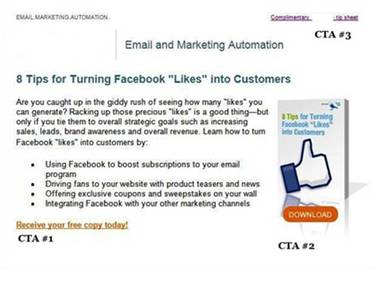That Picture is Going to Cost Me How Many Words??
Fri, 14 Aug 2015 09:53:59 -0700
Have you ever traveled to a foreign country where you don’t speak the language? I remember travelling to France and, despite 4 years of high school French classes, felt completely lost when it came to communicating. Even basic phrases I learned on Day 1 didn’t seem to resonate with the locals. (I’m pretty sure I tried introducing myself by saying ‘omlette du fromage’). My dad used to tell me a story about going to a restaurant overseas where they had to bring out a picture menu and he had to point at what he wanted to order.
There’s no question that images make it easier to communicate. Cave paintings were around long before any written word. There’s a reason that we start by reading picture books first. Additionally, many studies have proven that we remember pictures better (this is known as the Picture Superiority Effect). Given those studies, the fact that we have the attention span of a goldfish, and the fact many social media platforms prioritize images over text posts, it should be considered a done deal that images are better right?
Not so fast – words have a powerful impact as well. Consider the following study:
- CTA #1 received 51% of clicks
- CTA #2 received 41%
- CTA #3 got a measly 8%.
Why? CTA #1 provided better value to the reader (by using the word “free”). It also provided better “value” in terms of location. If we are engaged with the copy, we are likely to keep reading on instead of interrupting ourselves to click on the side image.
In a previous life I worked with a company that used to send out about 200 targeted emails a month. Most of these were HTML and included stimulating images, product imagery, and multiple click through options. The best email they ever sent out was:
Subject – Company X has a new website.
Body – Visit our new website: ww.newwebsite.com
Simple but extremely effective. The click-through rate was through the roof.
Why? It created some intrigue right from the get-go. Sure this could have been done with an image, but that may have taken away from the core goal – get people to visit the new website. Always remember your goal when you create your CTA; it’ll usually lead you in the right direction when deciding on images and text.
Overall, it is better to create engaging content and call to actions (no matter the medium). An email that keeps a customer’s interest and funnels them to a CTA is going to be better than one that is only glanced over (image or not). A text-only tweet / FB post that is shared by 100 customers will be viewed more a picture one that isn’t shared at all.
Here are some considerations no matter if you are using images or text:
- Provide Value – Make sure each piece has a purpose. Don’t use an image just to have an image. Don’t use extra words that aren’t needed.
This might be a good time to remind you that the purpose of these tips are to help you with your marketing – specifically with your ads on Cidewalk. Click here to try it out today.
(Ha! Snuck that one in there – and didn’t even give you any warning!) - Create Intrigue – An air of mystery can funnel your customers into the next step of your sales process. As they learn more about your company / product, they are more likely to become invested (and eventually purchase). Promoting a particular benefit and connecting that with an emotion is a great way to achieve this . .. . . . (I, for one, will always connect those Head On! Apply Directly to the Forehead! commercials with annoyance. But hey, I looked up what it was).
- Relate to your audience – If your primary target audience is women 28 – 44, don’t use a man for your ads. If your primary audience is millennials, don’t make a reference to Soupy Sales (and if any millennials are reading, no he doesn’t have anything to do with Campbell’s marketing department). Use images & wording that your audience will connect with – this could be proper slang (or lack of), adjectives that your audience find endearing, or using major life events (such as buying a house, graduating, or meeting the in-laws for the first time and being so nervous you don’t speak for nearly the entire night and only answer with canned responses that you practiced in the car ride over – not that I’m speaking from personal experience or anything . . . . . ).
- Tell a Story – Humans have been storytellers for nearly their entire history no matter their location or culture. Tell stories in your ads. This can be with both text and images (and of course video).
next week for more tips!


